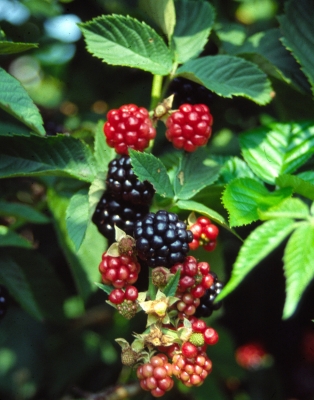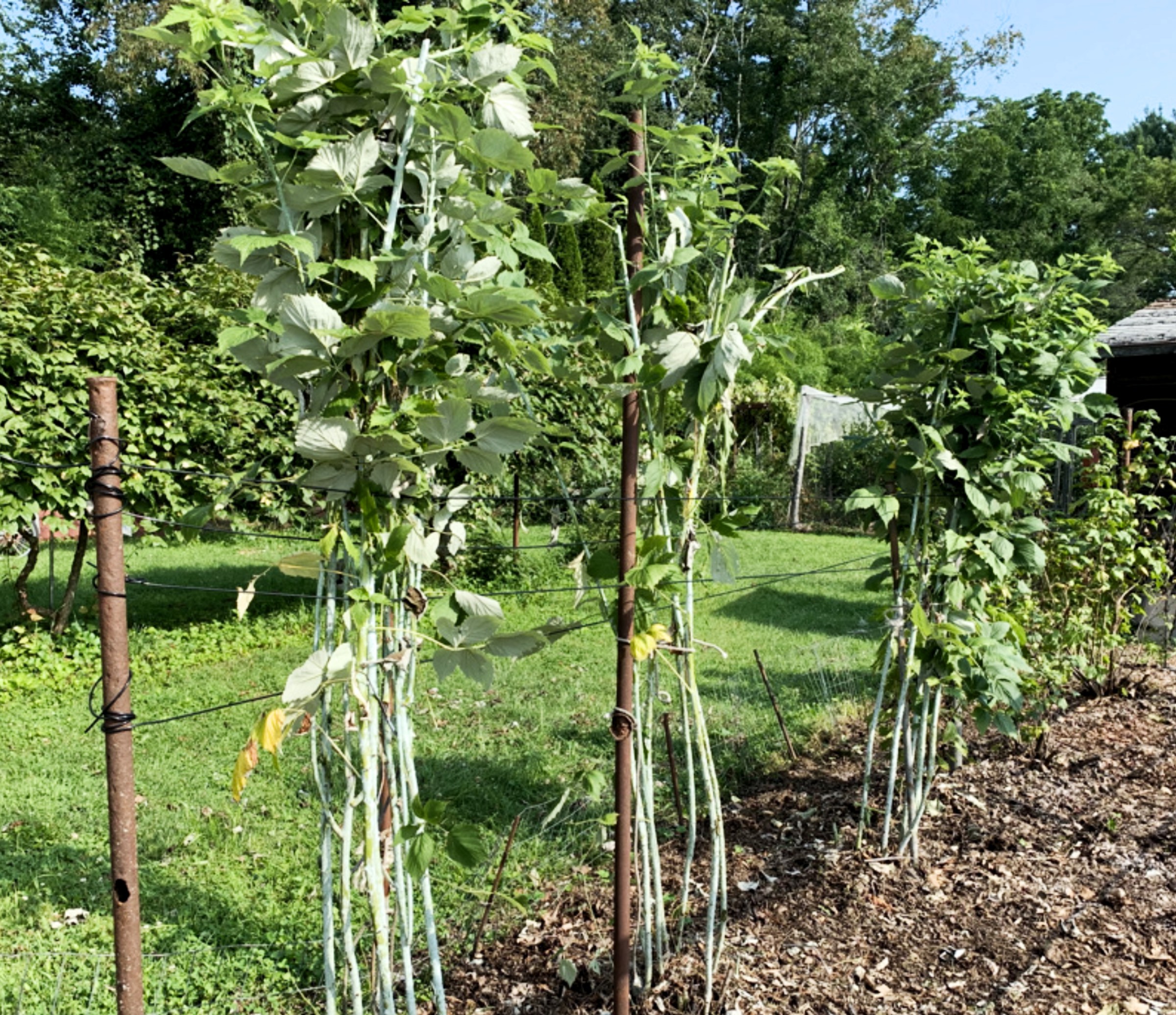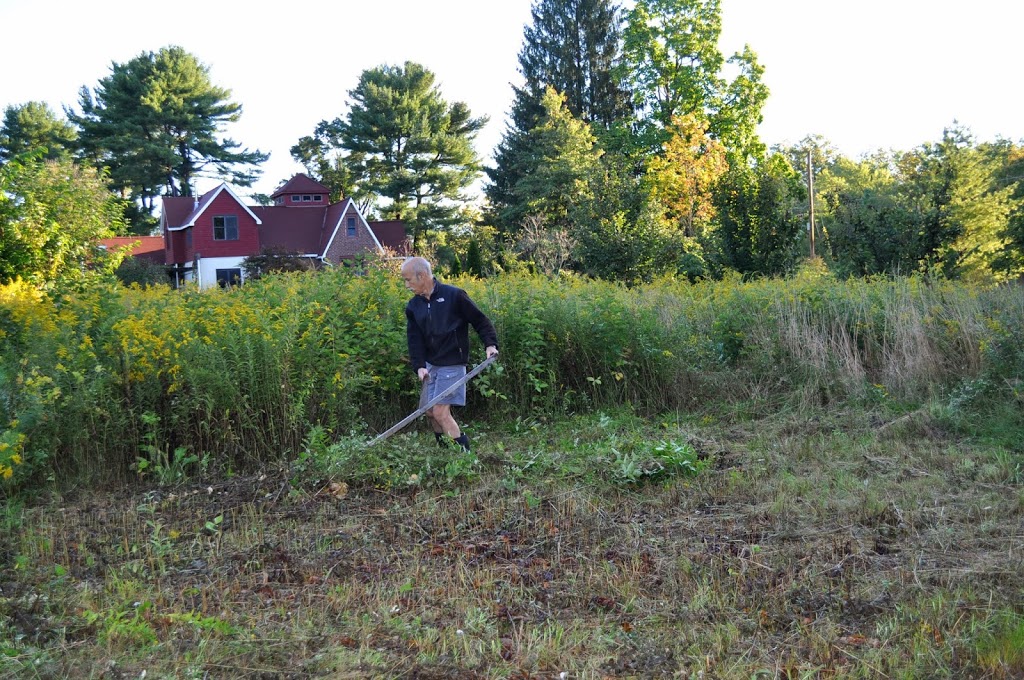What a lucky gardener I am to have a one-acre field at my disposal. Not for planting, though. Except part of it; I couldn’t restrain myself.
When I moved here, many years ago, the caretakers of the field — before it was mine –mowed it every couple of weeks all summer long. Before them, another neighbor had mowed the field once a year with a sickle bar mower attached to his tractor. Nowadays, I mow the bulk of the field once a year with my tractor’s
brush hog attachment, which is, in essence, a giant rotary motor. But I mow the edges and a significant portion of the field by hand, with a scythe.
(Stay tuned for a scything video posted on my “Life on the Farmden” video series; link to the series above, to the right.)
So what’s so lucky about having this not-so-care-free field to take care of? Four things. First, the field offers a bit of wildness near my cultivated plants, a place where bees, dragonflies, and butterflies can frolic. Not that they can’t frolic among my cultivated plants, but there’s something to be said for what goes on among plants and soil hardly touched by human hand. Of course, rabbits, voles, and other undesirables come with the territory; I have to accept them.
The second lucky thing about having this field is all the mown vegetation it provides. Mowings from the brush hog are not easily gathered, but that from my scythe is. Laid on the ground beneath my trees, shrubs, and vines, this vegetation provides mulch that keeps the soil moist and feeds soil microorganisms and plants. Stuffed into my compost bins, the vegetation is nutritious food for my compost “pet” (pile).
That scything is also good for me, for the exercise. What a joy to step out in the coolness of morning and swing the scythe, stirring my “blood and [flexing my] muscles, while it clears the meadows,” to quote Scott Nearing, who lived to be 100. That’s lucky thing number three.
Lucky thing number four is that I get to enjoy the beauty of the field, now dominated by yellow heads of goldenrod. Livening things up are spots of white asters against a shifting green background of grasses. And then there are patches dark green with thorny blackberry canes or red with leaves of sumac.
————————————————————-
Ah, that sumac and those blackberries. They are the next step in the field’s transition from a meadow of herbaceous plants to woody shrubs, and then on to trees. That’s what happens if Nature’s given a free hand around here.
But I want a meadow. Not only that, but I notice that the ground beneath the tall goldenrod plants is quite bare of other vegetation.
So I’ve taken matters into my own hands, and am now scything down some of the goldenrod and any
areas dense with blackberry canes or sumac shoots. Exposed to light, the near-naked ground should soon be dense with sprouting grasses. By selectively scything those cleared areas repeatedly next spring, grasses can regain a toehold. Grasses are the only plants that tolerate frequent mowing.
A balance needs to be struck here. Too much mowing, and only grasses will persist. I’m trying for a mix of grasses with some goldenrod and other flowering meadow plants.
————————————————————–
With a nod to sustainability, the question arises: In mowing the field and removing the mowings for compost and mulch, am I robbing Peter to pay Paul? As nutrients are carted off along with the vegetation, will the field yield less and less over the years. My guess is not.
Only a small portion of the total field gets scythed and harvested. And I scythe and harvest different areas each year. Soils have natural abilities to regenerate themselves when left alone. Nutrients locked up in
native minerals are unlocked over time as those minerals are solubilized by microbes and root exudates.
Even nitrogen, the nutrient that plants need in greatest amounts, can be grabbed from the air (which is 80% nitrogen) and put into a form that plants can use. Leguminous plants do this with the aid of symbiotic bacteria, but soils also contain free-living bacteria and other microorganisms that can grab at the nitrogen in the air to put in the ground.
So, all in all, the field presents a win-win situation, for me, for my plants, and for all the creatures, microscopic and larger, that get to enjoy it.
 I finally gave up on Chester because winter cold would snuff out many of its canes down to ground level. If I remember correctly, surviving canes bore fruit that was too late in the season to ripen fully or in sufficient quantity. Read more
I finally gave up on Chester because winter cold would snuff out many of its canes down to ground level. If I remember correctly, surviving canes bore fruit that was too late in the season to ripen fully or in sufficient quantity. Read more





